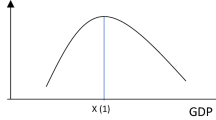Abstract
A goal of a 50% reduction in global greenhouse gases emissions by 2050, with an 80% reduction by developed countries (hereafter referred to as the G8 Goal), was proposed at the G8 Summit held in L’Aquila, Italy, in July 2009. Here we analyze the scientific and political implications of the G8 Goal and its equity and feasibility by examining four greenhouse gas emissions scenarios. Our results show that (1) the goal to keep atmospheric CO2 concentration of <450 ppmv, stated by G8 nations, can only be achieved under the scenario of a steady, linear emissions reduction by all countries and simultaneously meeting the G8 Goal during the period 2005–2050; (2) under the G8 Goal, the carbon emissions quota for developing countries would not meet their carbon emission demands even if very strict reduction regimes are followed, with a gap of up to >1/3 of emissions demand in the next 45 years; and (3) under the G8 Goal, the cumulative per capita emissions during the period of 2006–2050 for developed and developing countries will be 81 t C and 40–47 t C, respectively, with the former doubling that of the latter, implying that the historical disparity of carbon emissions between developed and developing countries would be widened. Historically, the cumulative per capita emissions from developed countries are 12 times of those from developing countries. We therefore conclude that (1) the G8 Goal seeks to impose binding reduction targets on developing countries that will impede their industrialization process and cause conflicts among developing countries in the allocation of carbon emission rights; (2) the G8 Goal will not only widen the existing disparities of historical carbon emissions between developed and developing countries, but also generate new inequalities in the rights of carbon emissions; and (3) the 450 ppmv threshold of atmospheric CO2 concentration control, which is the basis for the G8 Goal, is impractical and impossible, and should not be accepted as the foundation for international climate negotiation on carbon emission reduction. In summary, the G8 Goal is clearly against the principle of “common but differentiated responsibilities” and thus is unacceptable for developing countries.
Similar content being viewed by others
References
Intergovernmental Panel on Climate Change (IPCC). Climate Change 2007: The Physical Science Basis. Contribution of Working Group I to the Fourth Assessment Report of the Intergovernmental Panel on Climate Change. Cambridge: Cambridge University Press, 2007
Marland G, Boden T A, Andres R J. Global, regional, and national fossil fuel CO2 emissions. In: Carbon Dioxide Information Analysis Center, ed. Trends: A Compendium of Data on Global Change. Oak Ridge National Laboratory, U.S. Department of Energy, Oak Ridge, Tenn., U.S.A., 2008
Enting I G, Wigley T M L, Heimann M. Future emissions and concentrations of carbon dioxide: Key ocean/atmosphere/land analyses. CSIRO Division of Atmospheric Research Tech Pap No. 31, Melbourne, 1994
Jiang K J, Hu X L, Liu Q, et al. Research of China’s 2050 low-carbon development scenario. In: 2050 China’s Energy and Carbon Emission Research Group, ed. 2050 China Energy and CO2 Emission Report (in Chinese). Beijing: Science Press, 2009. 753–820
Ding Z L, Duan X N, Ge Q S, et al. Control of atmospheric CO2 concentrations by 2050: A calculation on the emission rights of different countries. Sci China Ser D-Earth Sci, 2009, 52(10): 1447–1469, doi: 10.1007/s11430-009-0155-3
Author information
Authors and Affiliations
Corresponding author
Additional information
Supported by the Academic Division of the Chinese Academy of Sciences and the National Natural Science Foundation (Grant No. 90711002)
Rights and permissions
About this article
Cite this article
Fang, J., Wang, S., Yue, C. et al. Scenario analysis on the global carbon emissions reduction goal proposed in the declaration of the 2009 G8 Summit. Sci. China Ser. D-Earth Sci. 52, 1694–1702 (2009). https://doi.org/10.1007/s11430-009-0197-6
Received:
Accepted:
Published:
Issue Date:
DOI: https://doi.org/10.1007/s11430-009-0197-6




